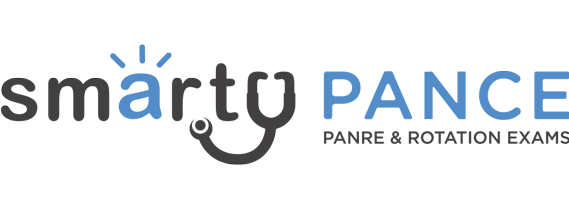The NCCPA™ PANCE Cardiology System Content Blueprint includes two topics related to lipid disorders
| Hypercholesterolemia
Patient will present as → a 55-year-old obese Caucasian gentleman who arrives at your clinic for a routine check-up after having some blood work done during a routine workplace health screening. He is found to have a total cholesterol level of 430 mg/dL. He complains of calf pain while walking to the convenience store, which only resolves with rest. He states that he has a follow-up appointment with his cardiologist because of some occasional chest pain and abnormalities seen on his EKG. Additionally, you notice that he has well-demarcated yellow deposits around his eyes. Subcutaneous xanthomas, premature arcus senilis, lipemia retinalis
DX: Screening may include total cholesterol alone, total and HDL cholesterol, or LDL and HDL cholesterol levels Medications:
Statin Therapy: Key Points for Practice (based on the latest treatment guidelines) The guideline emphasizes that lifestyle modification remains a critical component of atherosclerotic cardiovascular disease (ASCVD) reduction Four groups most likely to benefit from statin therapy
Risk assessment for 10-year and lifetime risk is recommended using an updated ASCVD risk calculator TX: Treatment Targets: There are no recommendations for or against specific target levels for LDL-C or non–HDL-C in the primary or secondary prevention of ASCVD. Secondary Prevention in men and women up to 75 years of age who have clinical ASCVD, high-intensity statin therapy should be initiated unless contraindicated.
Primary prevention in persons 21 years or older with an LDL-C of ≥ 190 Persons who have LDL-C levels of 190 mg per dL or greater, or triglyceride levels of 500 mg per dL (5.65 mmol per L) or greater should be assessed for secondary causes of hyperlipidemia.
Primary prevention in persons WITH diabetes and LDL-C of 70 - 189
Primary prevention in persons without diabetes and with LDL-C of 70 - 189
Before initiating statin therapy, it is reasonable for clinicians and patients to engage in a discussion about the potential for ASCVD risk-reduction benefits, adverse events, drug-drug interactions, and patient preferences. For persons with LDL-C less than 190 mg per dL who do not fall into a statin benefit group or for whom risk-based treatment is uncertain, other factors may be used to inform treatment decision making.
Heart failure and hemodialysis There are no recommendations on initiating or discontinuing statin therapy in patients with New York Heart Association class II through IV ischemic systolic heart failure or in patients on maintenance hemodialysis |
High, Moderate, and Low-Intensity Statin Therapy
| HIGH INTENSITY | MODERATE INTENSITY | LOW INTENSITY |
| Daily dosage lowers LDL-C by approximately ≥ 50% on average | Daily dosage lowers LDL-C by approximately 30% to 50% on average | Daily dosage lowers LDL-C by < 30% average |
| Atorvastatin (Lipitor), 40 to 80 mg | Atorvastatin, 10 (20) mg | Simvastatin, 10 mg |
| Rosuvastatin (Crestor), 20 (40) mg | Rosuvastatin, (5) 10 mg | Pravastatin, 10 to 20 mg |
| Simvastatin (Zocor), 20 to 40 mg | Lovastatin, 20 mg | |
| Pravastatin (Pravachol), 40 (80) mg | Fluvastatin, 20 to 40 mg | |
| Lovastatin (Mevacor), 40 mg | Pitavastatin, 1 mg | |
| Fluvastatin XL (Lescol XL), 80 mg | ||
| Fluvastatin, 40 mg twice daily | ||
| Pitavastatin (Livalo), 2 to 4 mg |
| Hypertriglyceridemia
Patient will present as → a 17-year-old female brought in by her parents to check her cholesterol due to a family history of hypertriglyceridemia. Her dad and paternal aunt have a history of pancreatitis. Family history is negative for premature arteriosclerotic cardiovascular disease. Her cholesterol panel is as follows: Total cholesterol 188 mg/dL (<200), triglyceride 851 mg/dL (<150), HDL 15 mg/dL (>50), LDL 102 mg/dL (<130). Obtain a fasting lipid panel beginning at age 20 and repeated every 5 years
Treatment
|

